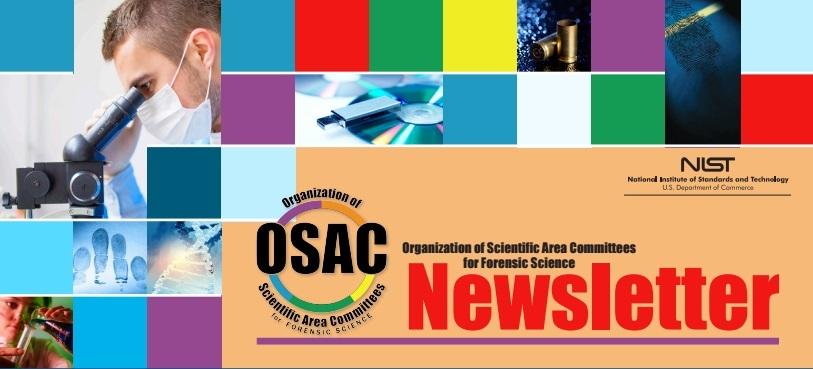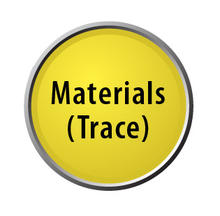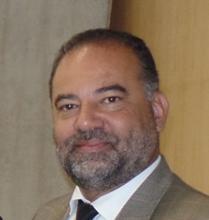OSAC Newsletter, December 2015

December 2015
Message from the Chair | Upcoming Public Comment Period for Standards/Guidelines Consideration for the OSAC Registry | Materials Trace Subcommittee Seeks Information from Stakeholders through Open Survey | FSSB Appoints New Crime Scene Investigation Subcommittee Chair | FSSB Updates OSAC Standards vs. Guidelines Differentiation | Who Knew: There's a standard on how to write a standard! | The OSAC Registries -- Not a new concept | OSAC Membership Update: Jose Almirall Fills FSSB Vacancy | Recent and Upcoming OSAC Meetings
Message from the FSSB Chair

1. Update Standards Projects Lists:
·Provide an updated list of standards/guidelines that are ready for either the OSAC Registry Approval Process or the OSAC Working with an SDO Process
·For any new standard/guideline that will be sent to an SDO using the OSAC Working with an SDO Process, determine which SDO will be utilized
·Provide an updated list of existing SDO standards/guidelines that need to be sent back to the originating SDO for revision prior to entry into OSAC Registry Approval Process
2. Develop Research Needs for placement on the OSAC public website
3. Update Priority Action Reports that will be presented during AAFS and other venues
4. Update Kavi Membership Rosters and input all standards/guidelines activities that are in-process into KAVI as "Projects" (Kavi is the document management software employed by OSAC)
We will provide public updates on these items during the OSAC Scientific Area Committee Public Status Reports & Open Discussion Meetings at the American Academy of Forensic Sciences on February 22-23, 2016 in Las Vegas, NV. These presentations will also be webcast live.
Upcoming Public Comment Period for Standards/Guidelines Consideration for the OSAC Registry
The Digital/Multimedia SAC has submitted the following standard and the following guideline (Guide) for consideration to add to the respective OSAC Registry. The 30-day public comment period opens today, December 18, on the Kavi Public Workspace under "documents". The intent of the public comment period is to collect public opinion on inclusion of the documents on the relevant OSAC registry.
Standard Terminology for Digital and Multimedia Evidence Examination
ASTM E2916 − 13 Standard Terminology for Digital and Multimedia Evidence Examination. This document provides standard terminology for the subcommittees of Digital Evidence, Facial Identification, and Video Imaging Technology and Analysis.
Standard Guide for Forensic Digital Image Processing
ASTM E2825 − 12 Standard Guide for Forensic Digital Image Processing. This document provides digital image processing guidelines to ensure the production of quality forensic imagery for use as evidence in a court of law. It briefly describes advantages, disadvantages, and potential limitations of each major digital imaging process.
Materials Trace Subcommittee Seeks Information from Stakeholders through Open Survey

LAB ADMINISTRATORS SURVEY:
https://www.surveymonkey.com/r/DWZB2VH
TRACE ANALYST SURVEY:
https://www.surveymonkey.com/r/97P5R39
FSSB Appoints New Crime Scene Investigation Subcommittee Chair
Dr. Marilyn Miller was appointed to the new Crime Scene Investigation Subcommittee as Chair on December 4th, 2015. Dr. Miller earned her Ed.D. at Johnson & Wales University in Educational Leadership. She also earned her M.S. at University of Pittsburgh in Forensic Chemistry and her B.A. at Florida Southern College in Chemistry. Dr. Miller is currently a Tenured Associate Professor for the Department of Forensic Science, College of Humanities and Sciences at Virginia Commonwealth University.
Dr. Miller has 15 years of experience as a forensic scientist and crime scene investigator, and 19 years of experience publishing and teaching crime scene investigation and crime scene reconstruction. Her professional laboratory experience includes supervising the Forensic Services Unit with the City of Asheville Police Detective Division as well as directing and founding the Detective Division, Forensic Laboratory of Manatee County Sheriff's Office and the Forensic Laboratory and Forensic Services Unit of the Sarasota County Sheriff's Department.
The Crime Scene Investigation Subcommittee will focus on the standards and guidelines related to the investigation of crime scenes including the search for, documentation of, collection of, and preservation of evidence associated with a crime scene. The Subcommittee will report to the Crime Scene/Death Investigation Scientific Area Committee.
The SAC task group is currently reviewing applications for Subcommittee members.
FSSB Updates OSAC Standards vs. Guidelines Differentiation
Within OSAC, both standards and guidelines refer to documents that have been developed using a "reasonable standards development process" and have technical merit. One distinction between an "OSAC Standard" and an "OSAC Guideline" is that implementation of items on the OSAC Registry of Approved Standards
will be required, whereas implementation of an OSAC Registry of Approved Guidelines will be only recommended. OSAC itself does not have the authority to require or enforce compliance with OSAC Standards. Any enforcement will come in the future when OSAC standards are incorporated by various accrediting bodies that perform laboratory and law enforcement accreditation services.
The general definitions currently used by OSAC are, a "standard ... specifies uniform methods, actions, practices, or processes, protocols. Compliance [is] mandatory and modified only under unusual circumstances," and a "guideline strongly recommend[s] ... methods, actions, practices, or processes to consider in absence of applicable standards [or] best practices that [are] not required."
OSAC previously differentiated between standards and guidelines by indicating that any document that contained a single "shall" or "must" would be considered a standard and a guideline would only use the term "should". However, the FSSB recently considered member feedback that indicated in the real world of forensic science standards, there are many standards which have only one (or few) "shalls" that are really guidelines and just because there is a single shall, it should not be elevated to the Registry of Approved Standards. Changing that single "shall" to a "should" also isn't the solution. There are illustrations of why the single "shall" needs to remain a "shall." Ultimately, the FSSB agreed that each document needs to be weighed based on its own merits as to whether the subcommittee recommends and the SAC decides to identify it as a standard or a guideline. The distinction between a standard and a guideline based solely on the existence of even a single "shall" was considered by the FSSB to be artificial and, in practice, unworkable. The importance of this issue is that the accrediting bodies are able to adopt "standards" (mandatory activities) into their accreditation process as "guidelines" are less clear on how to enforce.
Who knew? There's a standard on how to write a standard!
The OSAC will begin using ANSI/SES 1:2013, Recommended Practice for the Designation and Organization of Standards as a guide for drafting documentary standards. The standard is published by an ANSI accredited SDO, SES: The Society for Standards Professionals. (http://www.ses-standards.org) SES has provided copies of this standard licensed for OSAC use. Each Subcommittee will receive a copy of the ANSI/SES 1 standard, along with a Word template to aid them in drafting documentary standards. A recorded webinar on how to use SES 1 and its companion document SES 2:2011, Model Procedure for the Development of Standards, are available for download at: http://ses-standards.adobeconnect.com/p8g74hzpfhj/ SES is developing a new standard, SES 3, Recommended Practices for Joint Standards Development. SES anticipates publication of this new standard sometime in 2016.
The OSAC Registries – Not a new concept
One aim of the Organization of Scientific Area Committees for Forensic Science (OSAC) is to identify and promote existing, technically sound, consensus-based, fit-for-purpose documentary standards that are based on sound scientific principles. This will be achieved through the OSAC Registry of Approved Standards and the OSAC Registry of Approved Guidelines. A standard or guideline that is posted on the registry demonstrates that the methods it contains have been assessed to be valid by forensic practitioners, academic researchers, measurement scientists, and statisticians through a consensus development process that allows participation and comment from all relevant stakeholders.
The concept of a "registry" or "selected list" is not new to the standards community. Registries are a way for a community to support/endorse specific documents for use in a particular industry.
Some examples of existing registries or endorsed standards lists include:
The Federal Geographic Data Committee
The Federal Geographic Data Committee (FGDC) is an interagency committee that promotes the coordinated development, use, sharing, and dissemination of geospatial data on a national basis. This nationwide data publishing effort is known as the National Spatial Data Infrastructure (NSDI). The NSDI is a physical, organizational, and virtual network designed to enable the development and sharing of this nation's digital geographic information resources. FGDC activities are administered through the FGDC Secretariat, hosted by the U.S. Geological Survey. The FGDC is a 32-member interagency committee composed of representatives from the Executive Office of the President, and Cabinet level and independent Federal agencies. The Secretary of the Department of the Interior chairs the FGDC, with the Deputy Director for Management, Office of Management and Budget (OMB) as Vice-Chair. Numerous stakeholder organizations participate in FGDC activities representing the interests of state and local government, industry, and professional organizations. The FGDC Steering Committee has officially endorsed external standards in accordance with the FGDC Policy on Recognition of Non-Federally Authored Geographic Information Standards and Specifications. These standards play an important role in enabling interoperability. Included are standards from the Open Geospatial Consortium; ISO Technical Committee 211, Geographic information/Geomatics; the American National Standards Institute (through International Committee for Information Technology Standards Technical Committee L1, Geographic information systems) and de facto standards.
The Interagency Board (IAB) is a voluntary collaborative panel of emergency preparedness and response practitioners from a wide array of professional disciplines that represents all levels of government and the voluntary sector. Based on direct field experience, IAB members advocate for and assist the development and implementation of performance criteria, standards, test protocols, and technical, operating, and training requirements for all-hazards incident response equipment with a special emphasis on Chemical, Biological, Radiological, Nuclear, and Explosive issues. The IAB also informs broader emergency preparedness and response policy, doctrine, and practice.
The IAB manages a Selective Equipment List (SEL).
The SEL provides mission-specific sublists designed to support critical mission areas. These sublists are compiled by subject matter experts who draw appropriate items from all 21 sections of the SEL as needed. The sublists thus provide a "tailored SEL" for responders in a specific mission area such as mortuary operations.
Interagency Biometrics and Identity Forum (formerly National Science and Technology Council (NSTC) Subcommittee on Biometrics and Identity Management)
The Subcommittee on Biometrics and Identity Management (Subcommittee) was chartered in 2003 by the National Science & Technology Council (NSTC) Committee on Technology (COT). The purpose of the Subcommittee was to advise and assist the COT, NSTC and other coordination bodies of the Executive Office of the President on policies, procedures and plans for Federally sponsored biometric and identity management (BIdM) activities. The Subcommittee facilitated a strong, coordinated effort across Federal agencies to identify and address important policy issues, as well as a research, testing, standards, privacy and outreach needs. With the completion of the Subcommittee's charter, coordination efforts continue within the Interagency Biometrics and Identity Forum.
The NSTC on Biometrics and Identify Management established the Registry of USG Recommended Biometric Standards (Registry). The Registry supplements the NSTC Policy for "Enabling the Development, Adoption and Use of Biometric Standards." This Registry is based upon interagency consensus on biometric standards required to enable the interoperability of various Federal biometric applications, and to guide Federal agencies as they develop and implement related biometric programs. With completion of the Subcommittee's charter, coordination efforts continue within the Interagency Biometrics and Identity Forum (Forum). The Forum periodically reviews and updates the Registry as required to assist agencies in the implementation and reinforcement process of biometric standards to meet agency-specific mission needs. The most current version of the Registry is Version 5.0; August 1, 2014. The Subcommittee also published in 2009 the Supplemental Information in Support of the NSTC Policy to assist Federal agencies support biometric system interoperability. This document provides supplemental standards and testing related information in support of the NSTC Policy for Enabling the Development, Adoption and Use of Biometric Standard and the Registry of USG Recommended Biometric Standards.
In January 2013, the Smart Grid Interoperability Panel (SGIP), established by NIST, fully transitioned to a private/public partnership funded by industry stakeholders in cooperation with the Federal government. NIST continues an active role in the SGIP.
As part of its Charter obligations, the SGIP produces and maintains a "Catalog of Standards (CoS)." The Catalog is a compendium of standards and practices considered to be relevant for the development and deployment of a robust, interoperable, and secure Smart Grid. SGIP manages a wiki site which provides detailed information on the Catalog, including the criteria that standards, practices, and guides must meet for inclusion in the Catalog, objectives, FAQs, etc. Before any standard can be included in the CoS , it must go through an extensive review process involving the various committees of the SGIP. If the standard is mentioned in the NIST Framework Document either as an "identified standard" or a "standard under review", the standard will automatically be added to the list of standards for review. Any SGIP Member Organization can propose a standard for inclusion in the Catalog of Standards.
OSAC Membership Update: Jose Almirall Fills FSSB Vacancy

Dr. Almirall is a Fellow of the American Academy of Forensic Science (AAFS) since 1999, the founding chairman of the Forensic Science Education Programs Accreditation Commission (FEPAC) of the AAFS, past Chair of the SWGMAT Glass subgroup, and was appointed to the Scientific Advisory Committee of the Commonwealth of Virginia by the Governor of that state. He has served as a consultant to the United Nations Office on Drugs and Crime and to the International Atomic Energy Agency on forensic analysis of materials, and has 29 years of experience as a forensic scientist. Dr. Almirall also brings significant standards development experience to the board and the OSAC.
Recent and Upcoming OSAC Meetings
· (Internal OSAC Meeting) Forensic Science Standards Board (FSSB) at DEA Special Testing Laboratory in Sterling, VA on December 3-4, 2015
· (Internal OSAC Meeting) Full OSAC Subcommittee Meeting in Leesburg, VA on January 25-29, 2016
o January 25th – FSSB Meeting (8:30 AM – 5:00PM)
o January 26th – 5 SAC, 3 Resource Committee (RC), & 7 Subcommittee Meetings (8:30 AM – 5:00PM) and 6 Subcommittee Meetings (1:00 PM - 5:00 PM)
o January 27th – 24 Subcommittee and 3 RC Meetings (8:30 AM – 5:00PM)
o January 28th – 24 Subcommittee and 3 RC Meetings (8:30 AM – 5:00PM)
o January 29th – ½ day 24 Subcommittee Meetings (8:30 AM – approximately 1:00PM)
(Open to the Public) OSAC public reporting occurs at American Academy of Forensic Sciences (AAFS) in Las Vegas, NV on February 22-23, 2016. (5 SAC Chairs & 24 subcommittee chairs or their designee will present.)
The OSAC newsletter is produced monthly by OSAC Affairs at NIST with input from the FSSB and other OSAC members. Any mention of commercial products is for information only; it does not imply recommendation or endorsement by NIST. Contact forensics [at] nist.gov (forensics[at]nist[dot]gov) with comments or general inquiries.

